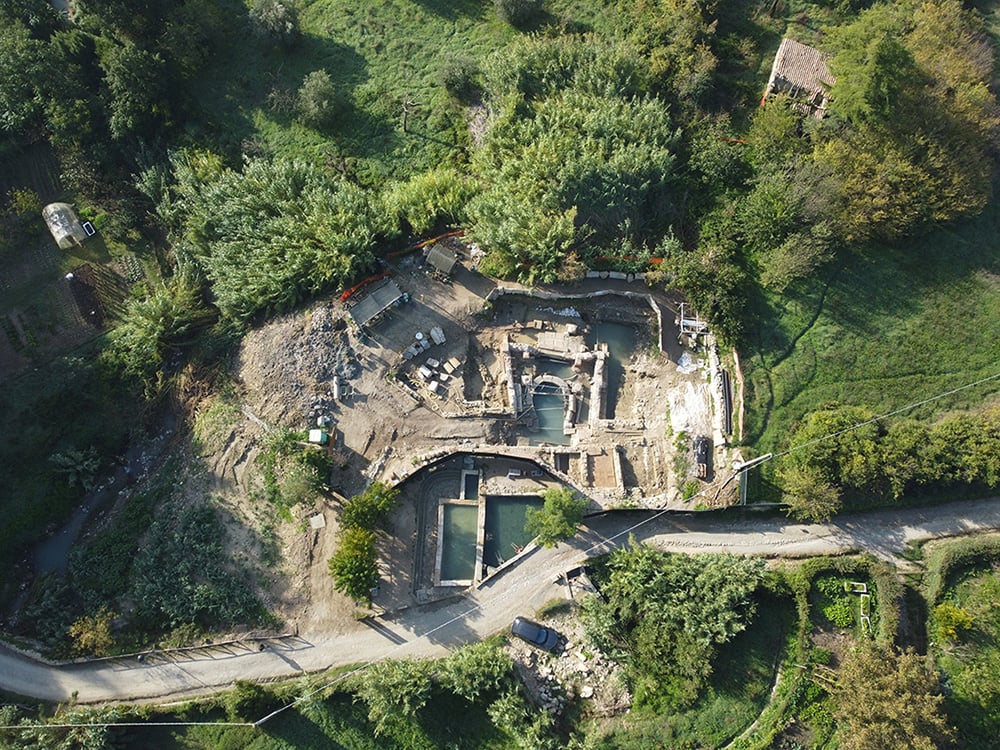
Rome’s Quirinale Palace is presenting a remarkable group of sculptures recently discovered in the thermal baths at San Casciano dei Bagni, in the ancient Etruscan city-state of Chiusi, halfway between Florence and Rome. The exhibition includes some objects that are the first of their kind to be discovered, including accurate bronze renditions of internal organs.
“The Gods Return: the Bronzes of San Casciano” features more than 20 statues and statuettes as well as thousands of bronze coins and anatomical votive offerings, mostly from the second century B.C.E to the first century C.E. The mud the artifacts were buried in has them in exceptional condition, keeping intact lengthy inscriptions in Etruscan and Latin.
The objects came to light last fall during an ongoing archaeological dig to uncover the thermal baths near the Tuscan town of San Casciano dei Bagni, which started in 2019. When little trace of the ruins was found after several weeks, a retired garbage disposal worker and amateur historian Stefano Petrini had a “flash” of intuition that helped redirect excavation efforts.
One of the finds in situ. Photo: courtesy of the Italian Ministry of Culture.
Petrini recalled that he had spotted parts of Roman columns on a wall nearby a friend’s vegetable garden, and pointed them out to archaeologists. “It all started there, from the columns,” Petrini told Reuters.
“It’s an extraordinary discovery,” Luigi La Rocca, a culture ministry official told reporters at the palace on Thursday, according to the New York Times. La Rocca in particular took note of the bronzes’ variety, their high quality and exceptional condition.
“It was like a time capsule waiting to be opened,” Emanuele Mariotti, the director of the excavation, told the New York Times. Some of the inscriptions on the bronzes come from the city of Perugia, more than 40 miles distant, indicating the extent of cultural interaction at the site, said Jacopo Tabolli, the scientific director of the dig and co-curator of the Quirinal show.
The same statue, after restoration. Photo: courtesy of the Italian Ministry of Culture.
The artifacts were concealed owing to the Etruscan tradition known as “fulgur conditum,” in which objects struck by lightning were considered to be imbued with divinity, and would then be buried. Communities including the pagans, the Etruscans, the Romans, and the Christians believed the waters of San Casciano had healing powers.
A new museum in the city center will serve as a permanent home for the artifacts, according to the Times, which reports that officials hope at least part of the museum will be open as early as next year.
The show is on view in Rome through the July 25, and then again from September 2 to October 29.